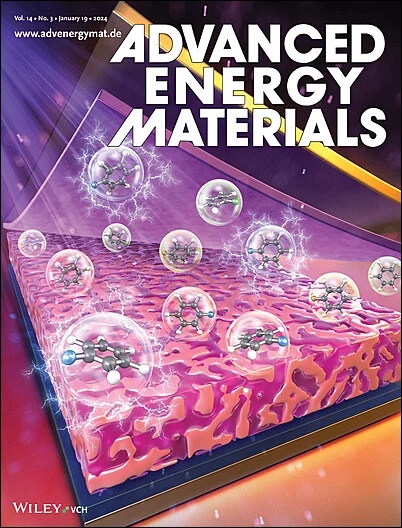高电压和高安全性锂金属电池的先进液体电解质设计
IF 26
1区 材料科学
Q1 CHEMISTRY, PHYSICAL
引用次数: 0
摘要
高压锂金属电池(lmb)代表了下一代储能技术的前景,但其商业化受到性能快速下降和安全问题的阻碍。主要挑战包括锂枝晶生长、不稳定的固体电解质界面(SEI)和阴极电解质界面(CEI)、铝集流器腐蚀、电解质氧化分解和固有的电解质易燃性。本文系统地讨论了通过设计先进的液体电解质来克服这些问题的策略,包括:1)通过高浓度电解质(hce)或局部hce来调节Li+溶剂化结构,以稳定Li沉积和抑制枝晶;2)采用定制溶剂分子设计弱溶剂化电解质,增强SEI/CEI稳健性;3)利用离子液体作为具有高电化学稳定性的不易燃溶剂来减轻电解质氧化和铝腐蚀;4)加入阻燃的磷基或氯基溶剂,以提高电解质的安全性。对未来研究方向的展望强调发展先进的原位和全电池表征技术,优化界面工程,扩大成本有效的电解质配方,以加速用于下一代储能的高电压,高安全lmb的实际开发。本文章由计算机程序翻译,如有差异,请以英文原文为准。
Advanced Liquid Electrolyte Design for High‐Voltage and High‐Safety Lithium Metal Batteries
High‐voltage lithium metal batteries (LMBs) represent a promising technology for next‐generation energy storage, yet their commercialization is impeded by rapid performance degradation and safety concerns. Key challenges include lithium dendrite growth, unstable solid electrolyte interphase (SEI) and cathode electrolyte interphase (CEI), aluminum current collector corrosion, electrolyte oxidative decomposition, and inherent electrolyte flammability. This review systematically discusses strategies to overcome these issues by designing advanced liquid electrolytes, including: 1) regulating Li+ solvation structures via highly concentrated electrolytes (HCEs) or localized HCEs to stabilize Li deposition and suppress dendrites; 2) designing weakly solvating electrolytes with tailored solvent molecules to enhance SEI/CEI robustness; 3) leveraging ionic liquids as nonflammable solvents with high electrochemical stability to mitigate electrolyte oxidation and Al corrosion; and 4) incorporating flame‐retardant phosphorus‐ or chlorine‐based solvents to improve electrolyte safety. Perspectives on future research directions emphasize developing advanced in situ and full‐cell‐based characterization techniques, optimizing interfacial engineering, and scaling up cost‐effective electrolyte formulations, to accelerate the practical development of high‐voltage, high‐safety LMBs for the next‐generation energy storage.
求助全文
通过发布文献求助,成功后即可免费获取论文全文。
去求助
来源期刊

Advanced Energy Materials
CHEMISTRY, PHYSICAL-ENERGY & FUELS
CiteScore
41.90
自引率
4.00%
发文量
889
审稿时长
1.4 months
期刊介绍:
Established in 2011, Advanced Energy Materials is an international, interdisciplinary, English-language journal that focuses on materials used in energy harvesting, conversion, and storage. It is regarded as a top-quality journal alongside Advanced Materials, Advanced Functional Materials, and Small.
With a 2022 Impact Factor of 27.8, Advanced Energy Materials is considered a prime source for the best energy-related research. The journal covers a wide range of topics in energy-related research, including organic and inorganic photovoltaics, batteries and supercapacitors, fuel cells, hydrogen generation and storage, thermoelectrics, water splitting and photocatalysis, solar fuels and thermosolar power, magnetocalorics, and piezoelectronics.
The readership of Advanced Energy Materials includes materials scientists, chemists, physicists, and engineers in both academia and industry. The journal is indexed in various databases and collections, such as Advanced Technologies & Aerospace Database, FIZ Karlsruhe, INSPEC (IET), Science Citation Index Expanded, Technology Collection, and Web of Science, among others.
 求助内容:
求助内容: 应助结果提醒方式:
应助结果提醒方式:


